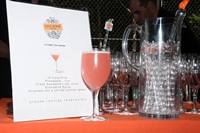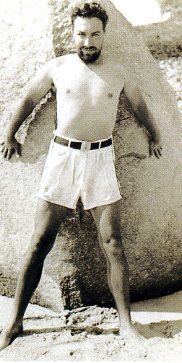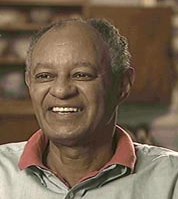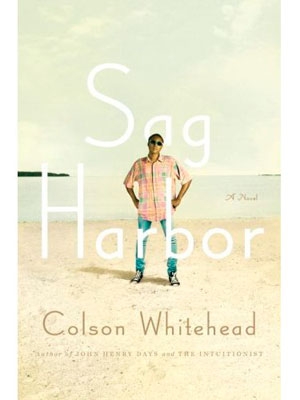 Beautiful, prosperous black Americans at their ease in high-summer;
Beautiful, prosperous black Americans at their ease in high-summer;
Prince Kunle Omilana and Princess Keisha Omilana
It's an iconic notion, the secure Kennedy compoundat Hyannis Port, Massachusetts, that's recently been in the news. Here, season after season, assured of belonging , different generations perennially return 'home' to a settled environment that's steeped in nostalgia, and cosseted in love.
Not every American is privileged to enjoy such a special place, surely not most African Americans. But some, seemingly born under an auspicious star, apparently have always gathered to share their leisure pursuits with others who were similarly favored.
Even opulent Newport, with its eclectic palaces, called "cottages", had a venerable small collection of black entrepreneurs from Boston and New York, who took up residence during warm weather. Seeking business opportunities among the white elite, soon they constituted an African American aristocracy. The uncontested leader of this group was George T. Downing, son of Thomas Downing, Wall Street's famed oysterman and abolitionist.
He had married Serena Leanora de Grasse on November 24, 1841, so that forty years later, surrounded by a large, accomplished, well dressed, brood, with their spouses, the Downings of New York, Newport and Washington, appeared as solid and handsome as any of the nation's most affluent citizens.
An abolitionist himself, George Downing built Newport's luxury Sea Grit House Hotel in 1854. He was already Newport's leading confectioner and caterer, working for families like the Wetmores and Kings, who were happily supplied with Downing's esteemed boned turkeys and pickled oysters, that so pleased Queen Victoria, she sent had sent his father a gold watch in thanks. Even an arson fire, destroying his five-storey hotel in 1860, didn't deter him.
The most prestigious Downing enterprise was his management of the café and dining room of U.S. House of Representatives at the Capitol. Granting Downing an opportunity to effectively influence policy-makers, as he insisted on serving blacks, after a decade, his concession was taken away. Yet so valued was Downing as a Republican stalwart who could reliably rally black voters, that, in 1903, visiting Newport, before he departed, President Roosevelt made sure to stop to greet George Downing.
August is ebbing away and this week the Obamas have finished turning scenic Martha's Vineyard upside down. Having a quick holiday at this secluded resort, they were only emulating the practice of other well-to-do blacks who have been spending summers here for well over a century.
"The Vineyard has had standing, socially, among African Americans since after the Civil War" says long-term resident Agnes Louard, a dignified retired educator from New York. A member of Oak Bluffs' vaunted "Polar Bears," Mrs. Louard explains authoritatively how blacks, seeking employment among white Methodists, who popularized open-air revivals called camp-meetings, ultimately imitated their employers by seeking Godly communion and innocent fun on 'the Vineyard' during their time off, too.
"At first, like whites, we lived in tents as well, and even after whites built cottages, for years most blacks had only the Shearer Cottage boarding house in which to stay. In the late 1920's Dr. Norman Cotton and his wife Bertha, she came from Boston, and their two daughters, were some of the first of our people to acquire a large house on the water. In those days, apart from Madame C. J. Walker, most 'colored people' didn't have separate vacation homes."
The unique "black-owned vacation house," to which Mrs. Louard referred, was Villa Lewaro,
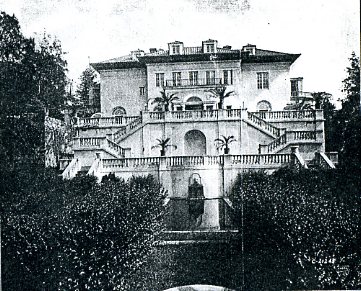
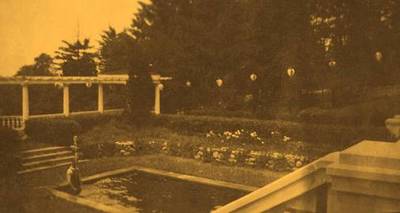
the county estate of black America's legendary hair-care and cosmetics magnate, at Irvington, New York. Neighbors, including Roosevelt's, Goulds, Astors, and Rockefellers, were aghast to learn that their exclusive and restricted community had been invaded by a "Negress, building a most pretentious house..." The estate's name was devised by family friend, Enrico Caruso using the first two letters of Madame Walker's name, and of her daughter's, A'Leia Walker Robinson.
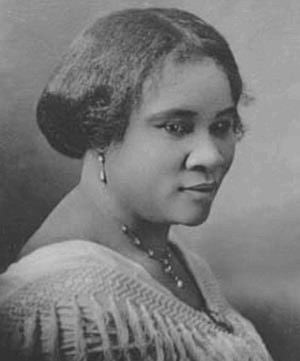
Designed by New York State's first licensed African American architect, Vertner Woodson Tandy, the Italian Renaissance-style structure derived its distinctive semi-elliptical portico from Mc Kim, Mead & White's nearby Frederick Vanderbilt house:
Frank R. Smith, of Righter & Kolb, who decorated Madame Walker's Harlem townhouse, as well as the elegant Fabbri residence on East 95th Street, specially designed furniture for the great hall and dining room at Villa Lewaro, that was manufactured by cabinetmakers Berkley & Gay.
Veritably black America's 'White House', during an epoch when most African Americas who had ventured abroad or earned advanced university degrees, felt that they knew each other, for over fifty years Villa Lewaro was in a class by itself.
Heir to a portion of the fabled Walker fortune, A'Lelia Ransom Nelson, whose father was the Walker Company's business manager and legal officer, worked and wintered in New York and eventually summered at Oak Bluffs. As faithfully as migrating birds, her daughter, Gill Nelson, the acclaimed writer and son, Stanley Nelson, an award winning film maker, still vacation here.
"We gained some political momentum with the arrival of future congressman, the Rev. Adam Clayton Powell, Jr.", boasts Mrs. Louard, relating yet more fascinating Vineyard lore. "In the early thirties he bought a house on the hill for his new wife Isabel, a former Cotton Club and Broadway star.They adoringly called each other Bunny, so their highly hospitable home was named, 'Bunny Cottage'."
As I can attest, Mrs. Powell was justly renowned for her Bloody Mary cocktails, the secret ingredient of which was Clamato juice. Hosting celebrities like Mrs. Powell's movie-star sister, Fredi Washington, or Bill 'Bo Jangles' Robinson, the remarkable tap-dancer, the Powell's prominent presence, boating, fishing, cycling, golfing and gardening, 'just like white folks', helped to quickly attract other blacks to Oak Bluffs.
Novelist Dorothy West was their next door neighbor and Isabel's sometimes deceitful nemesis, a lesbian who once asked an embarrassed homosexual Langston Hughes "to father her child."
Dashing Dr. Binga Dismond, an ardent yachtsman, was a neighbor of the Cottons, both on Harlem's Striver's Row, and at Oak Bluffs. For all their relative ease, in the past, as now, most black men, just as most white men who vacationed on the Vineyard, were merely members of the 'working rich'. Employing cars, planes, trains, helicopters and ferries, usually they could only only join their families on the weekends. By the 1940's however, Dismond and other 'super-rich Negros', such as his Harlem neighbor, Dr. Walter Ivey Delph, and dentist Dr. Chester Redhead began to divide their vacation between the Vineyard and an African American enclave, as historic as Newport's.
In time Earl Graves, the publisher, purchased Dr. Delph's house, and E. T. Williams, a successful developer, also moved between Oak Bluffs and Sag Harbor.
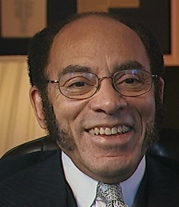
"Sag Harbor, just beyond the Hamptons, offers blacks a community in close proximity to summer houses of America's white leaders. Moreover, our sheltered public beach in the harbor, is superior to all their private and discriminatory ones" insist Dr. Redhead from the terrace of his modernist hillside house at the water's edge.
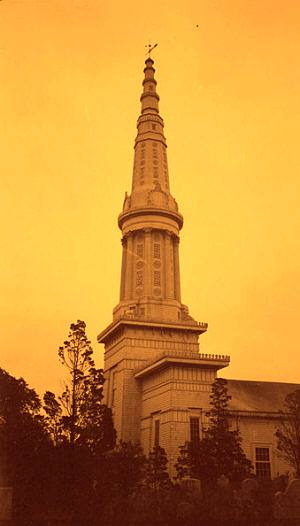
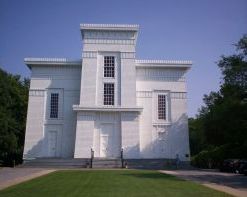
Mr. Williams and his lovely wife Lyn, who was born and reared in Baltimore, agree. They reside in a compound of several acres, focused on a remolded and extended shingled house from the 1850s, once owned by a black sea captain who hunted sperm-whales for their oily flesh, that was rendered to light lamps.
"Apart from slaves at work on Dutch farms, there were black sailors here early on, whose skill had been learned in Africa. Many were free men by the time of the Revolution and some became prosperous owners of property. It was with this background in mind, that Dr. Dismond formed the Azure Rest development, just after the Second World War. Tandy was his architect; and he designed several modern houses on the water for their friends from Harlem. They've mostly been long-altered and several are now owned by whites."
"Today," says a smiling Susan Taylor, whose tenure at Essence Magazine is considered as monumental as Diana Vreeland's reign at Vogue, " there's far more freedom. Blacks live everywhere in the Hamptons now, anywhere in the country really, if they wish. Only I'm glad I live in Sag Harbor, where one can not only get Colson Whitehead's book or hear him lecture at the library, but one can ask him over because he lives up the block.
Such an old-fashioned, unashamed race-proud sentiment is highly characteristic of the trail-blazing Ms. Taylor. Several years ago, with fellow midtown Manhattan resident, Reggie Van Lee, she made the end-of-summer Hampton's benefit of a small black dance company, into the must-do event, not just for African Americans, but for all discerning Hamptonites! A big blow-out, hosting a thousand, in an enormous semi-public sculpture garden, in years past, Ronald K. Brown's Evidence Dance Company's On Our Toes, in the Hamptons gala was thoughtfully scaled down this season.
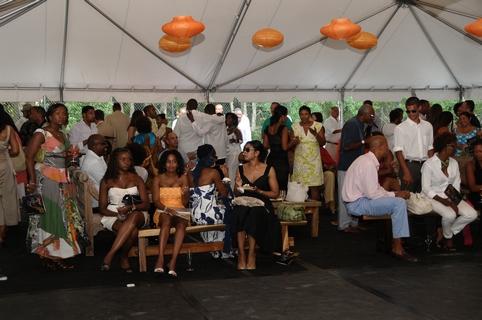
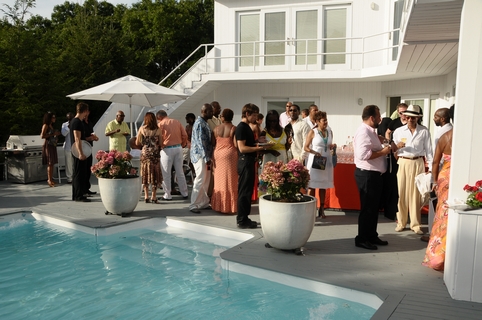
A graceful pageant, a spectacle of vivid color, against a white backdrop, it was staged poolside, at the serenely contemporary private house of Judge and Mrs. Bernard Jackson, at Watermill. But in order to ease access to local permits, it featured a local caterer, as opposed to Norma Jean Darden. Ms. Darden had always before offered such nice baby lamb chops, curried shrimp and other delectable things to nibble on with one's' refreshing drinks, that Noel Hankin gets Moet-Hennessey to supply.
Harriet Cole, of Ebony, from the fashion world, Rene Hunter, accompanied by designer Michael Mc Collom and Steven Robinson,
Susan Taylor and her agreeable husband Khephra Burns, the governor's lovely wife Michelle Patterson and actress Lynn Whitfield, looking absolutely marvelous---everyone, who was anyone, with the obvious exception of the Obamas, was there.
They were supporting fine art, to the extent of momentarily making up a superb living picture of all that's creative about human expression, the best of enlightened patronage: 'art, anointed, by an outpouring of the muses!'.
Alas, unavoidably I was absent, for the first time. So I had to resort to asking a chum, "How was it?" I was delighted for Evidence, and saddened, for myself, by her response.
"There was every kind of beautiful present; you would have loved it. The drinks were great!---in most ways, it was the best time ever!
I'm sure of at least one thing: next year, when I'm there again, and the Obama family are persuaded to attend, it will be perfect!
